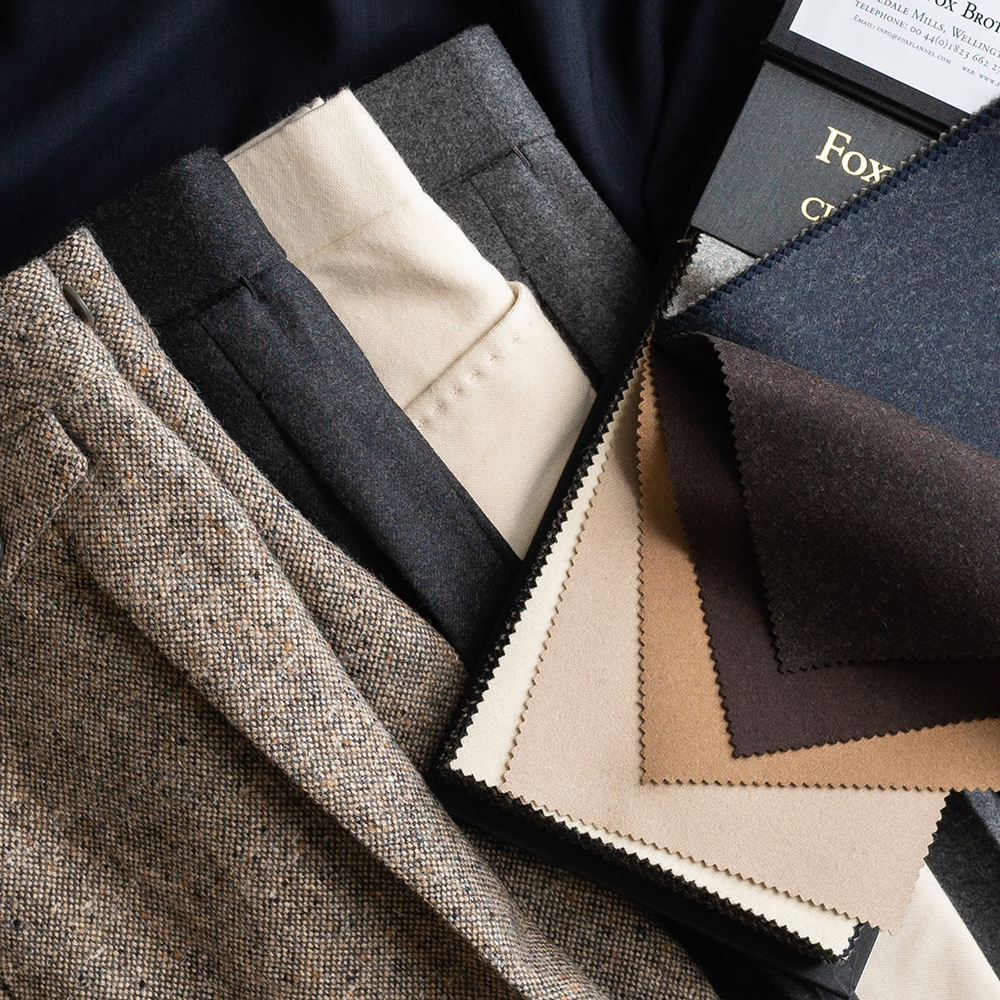
We’ve all been there before: you buy a sport coat that looked tremendous on the rack. You may have been charmed by the jacket’s color, weave, and subtle details, along with admiring how the jacket looked on you at the store. But upon returning home, you’re not sure how to coordinate your new acquisition. Should you wear your jacket with tan trousers? Grey? Green? Turquoise? Chartreuse?
The nice thing about wearing suits is that this decision is made for you. When your coat and trousers are cut from the same cloth, you only have to coordinate your shirt, tie, and shoes. But with sport coats, the decision becomes a little more complicated. The internet is full of color coordination guides showing how to wear every fabric imaginable. I’ve always found these charts useless — who memorizes these combinations or breaks out a chart when dressing in the morning?
Instead, I think it’s easier to dress according to some basic principles. This guide will not cover every color combination possible — you may stumble upon some pleasing ones that don’t follow these guidelines below. The goal here is to simplify your wardrobe so that you can find the right pair of trousers for nearly any sport coat.
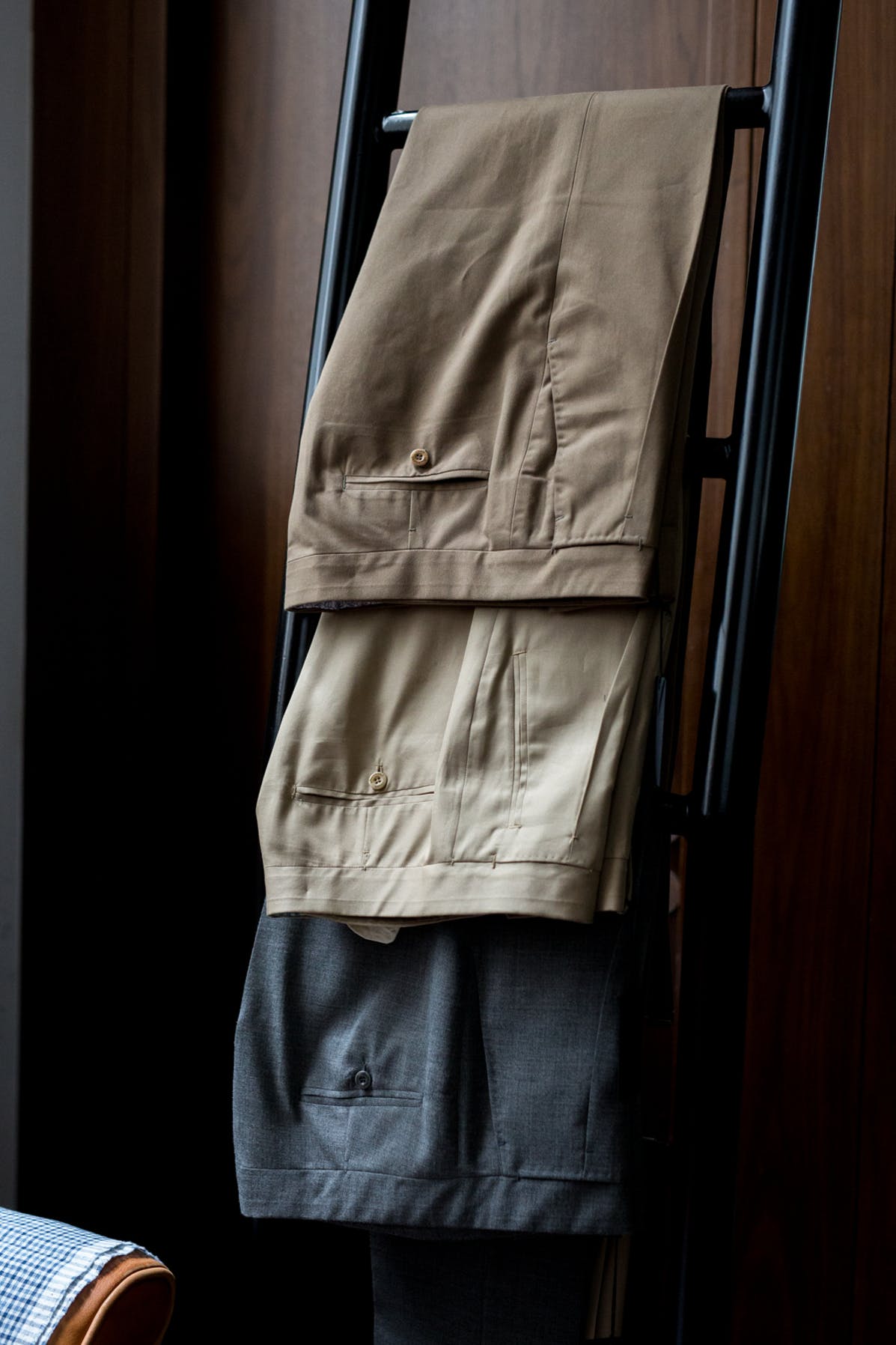
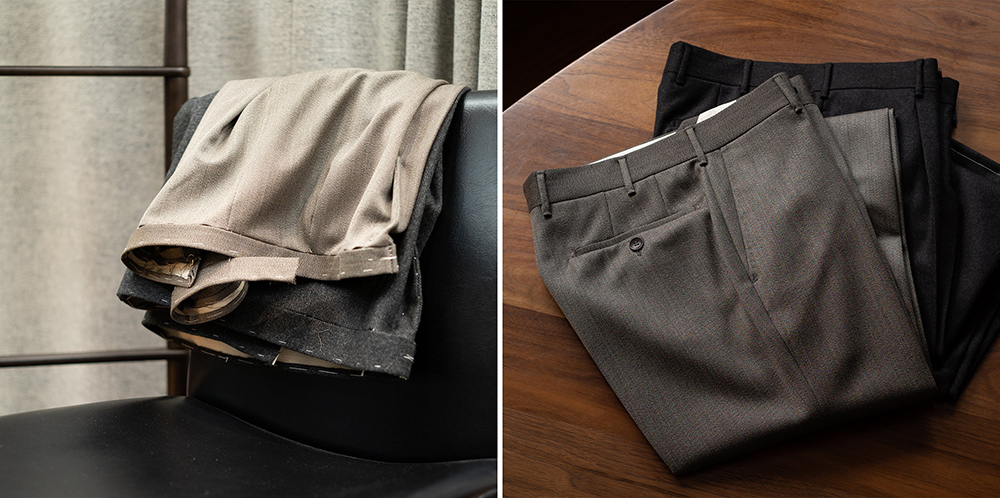
Stick to Grey and Brown
First, let’s start with the basics. Some men look tremendous in bright or oddly colored trousers. For example, Tom Chen is an interior designer based in Beijing and London. On Instagram, he occasionally posts photos of himself wearing pants in powder blue, honeydew, and eggplant. Bespoke tailor Tom Mahon also recently posted a photo of himself wearing sun-colored cords. These colors often do better in casual materials, such as corduroy or cotton twill. It also helps if you have a preppy wardrobe, a certain kind of cheerful disposition, and a pastoral lifestyle that involves living on country estates (or at least seem to).
For most men, grey and brown will be much more useful trouser colors. You can get them in a variety of shades — from cream to chocolate, pearl grey to charcoal. However, be careful with going too dark for your trousers. Since most men primarily wear dark-colored sport coats, they’ll want trousers that give them enough contrast. That means mostly relying on the light to mid-shades of these two colors.
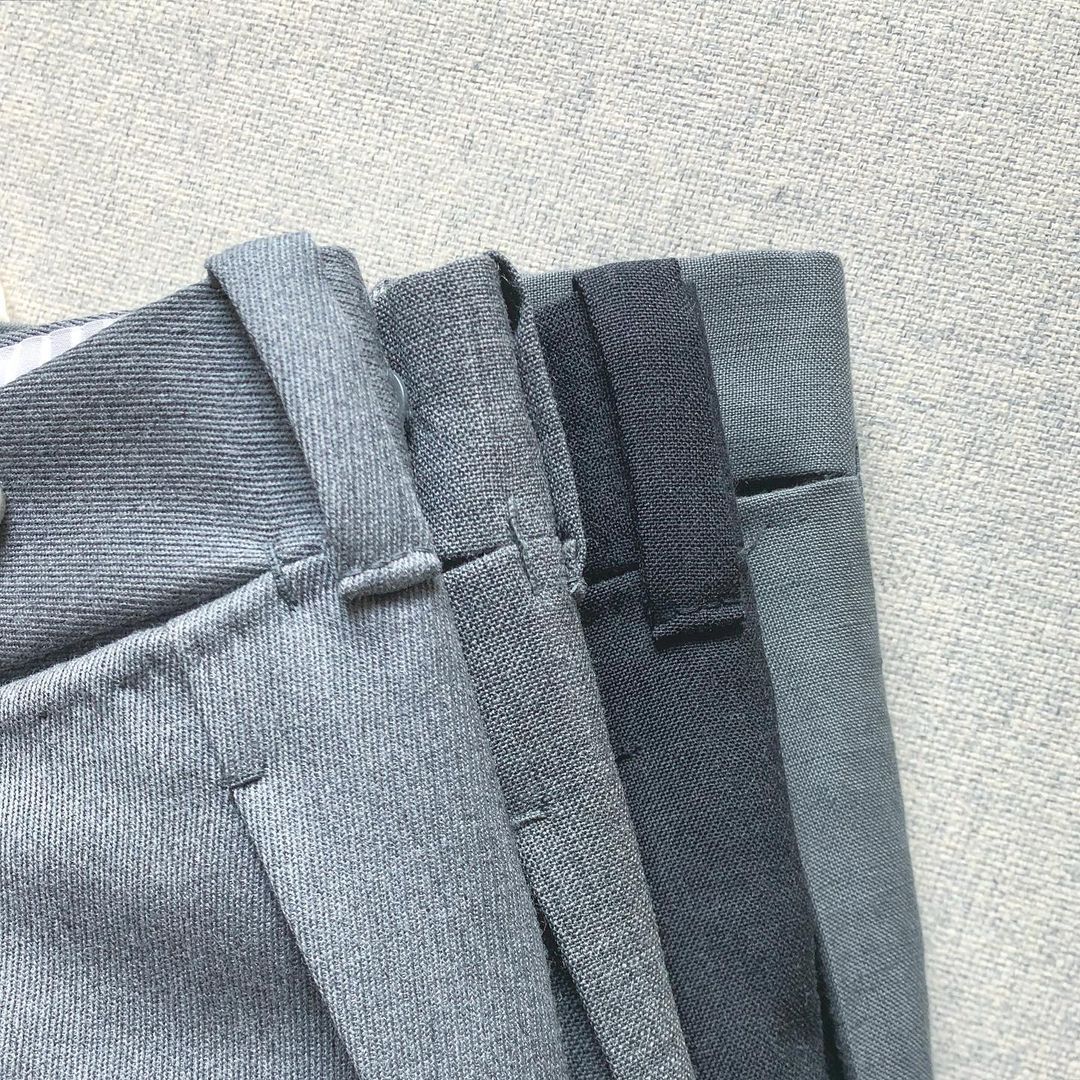
Get Variation From Material
You may be saying: “but grey and brown are boring!” This is true, and why such trousers are useful. The focus of a tailored outfit is traditionally on the v-shaped section just under your chin. This area is formed by your shirt, tie, and jacket’s open fronts. In this way, the trousers and shoes should visually fade into the background, keeping the viewer’s eyes up top, where they should naturally rest.
The good news is that you can still find a lot of variation in basic colors. In the photo above, you can see how grey expresses itself in different materials. From top to bottom, we have cavalry twill, tropical wool, fine worsted, and linen. Cavalry twill does well with fall and winter sport coats in hopsack, serge, and tweed. On the other hand, tropical wool trousers should be paired with summer jackets in open wools, linen, and cotton.
If you’re just starting to build a trouser wardrobe, stick to grey and brown. Get different shades of each, erring on the lighter to mid-shades. And choose materials that suit your climate. Wool flannel, calvary twill, and whipcord are lovely in the colder months. High-twist tropical wools, cotton, and linen are better when it’s warm. Not only will you feel more comfortable in these materials, but they will also complete sport coat ensembles you’ll wear during those seasons.
Note, some materials lend themselves better to specific colors. Corduroy, for instance, is a naturally rustic martial, so it does better in earthy colors such as tan or brown rather than grey. When choosing trousers, think about whether the material leans country or city, and choose colors appropriately.
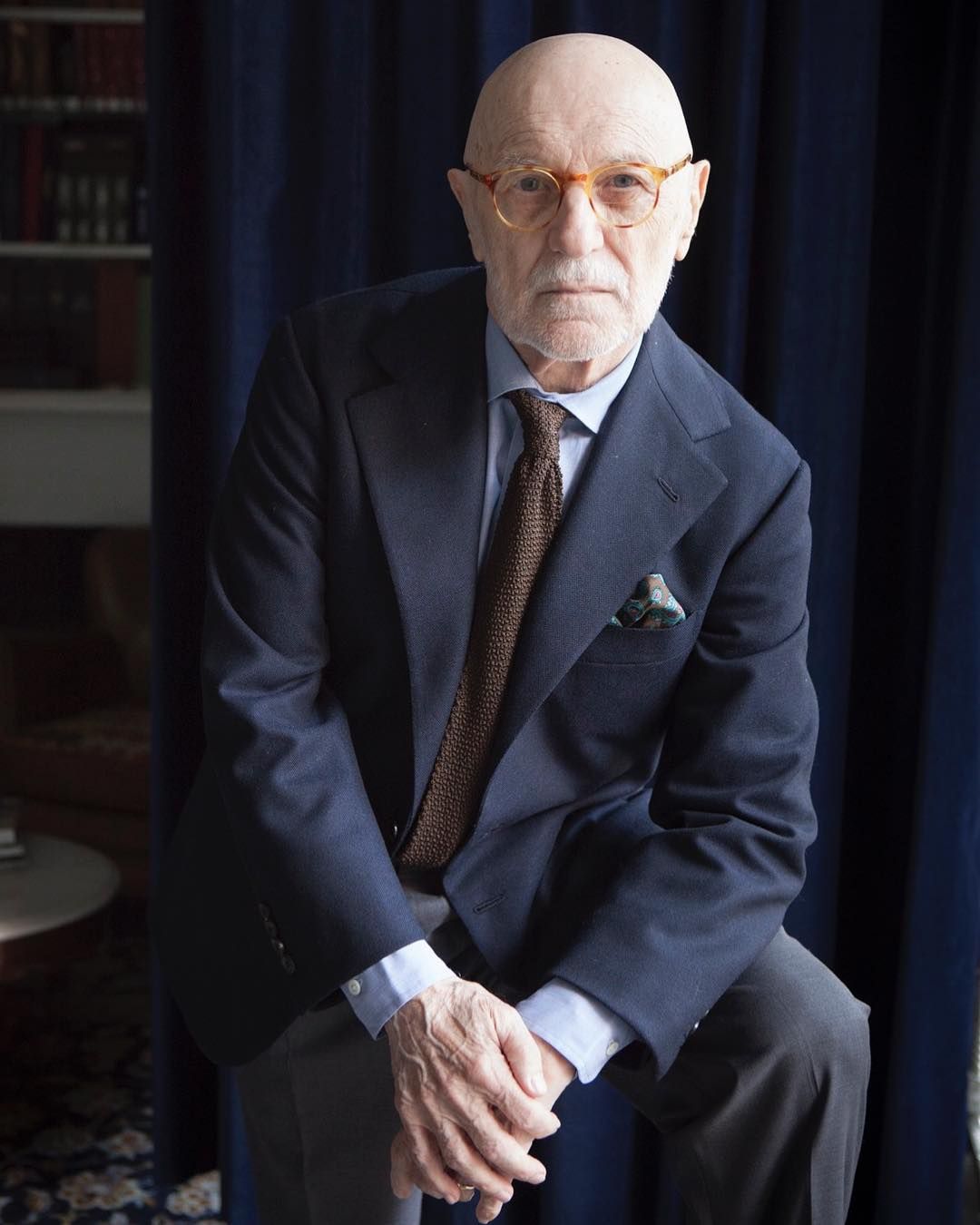
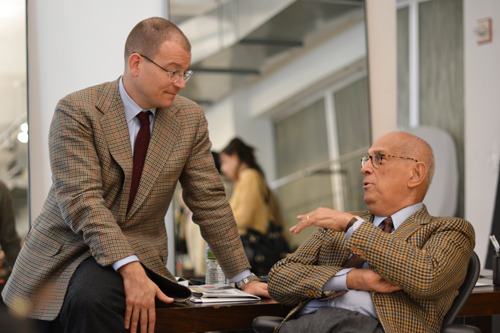
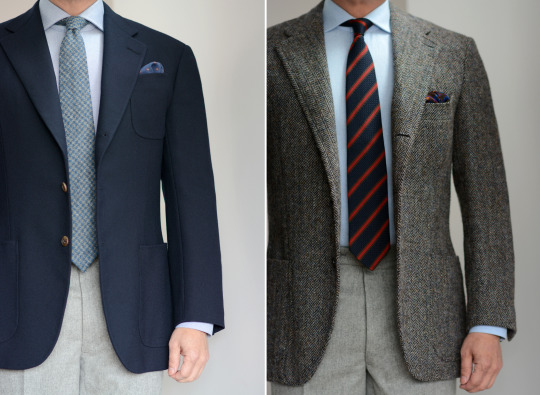
When you’ve limited yourself to grey and tan trousers, you’ve already made one step towards a simpler, more elegant wardrobe. It’s a bit like limiting yourself to white and light blue dress shirts, or black and brown dress shoes. These limitations help you get dressed in the morning. They also increase the chances of you creating a pleasing outfit.
In the photos above, you can see how well grey pants work with a range of sport coats in blue, grey, and brown. Nearly all of these outfits rely on flannel trousers. Instead of getting your variety from other colors, get it from different materials (whipcord is my favorite flannel alternative). It has been said that, if a sport coat can’t be worn with grey trousers, you probably shouldn’t buy it. I wouldn’t go that far, but it’s a good rule of thumb given the importance of grey pants in a classic wardrobe.
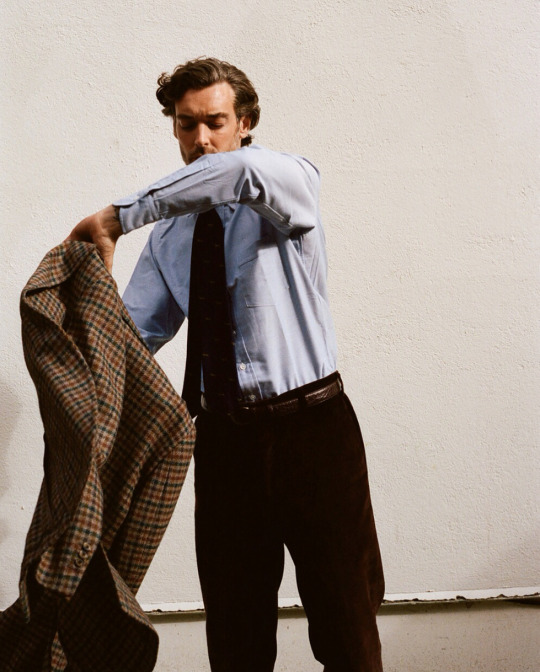

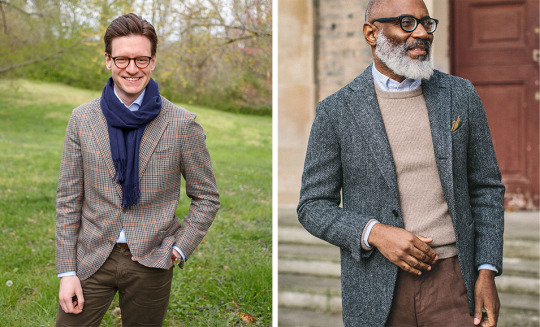
Of course, even the most conservative of dressers can’t always rely on grey trousers. This is where you’ll want to supplement with different shades of brown. The most versatile shades will be on the lighter end of the spectrum — from tan to mid-brown. But even in the photos above, you can see how well a slightly darker brown can work with country jackets. When building out your wardrobe, supplement with the more useful shades and materials: tan chinos, tan cavalry twill, and mid-brown whipcord. For something more casual, try brown five-pocket cords.
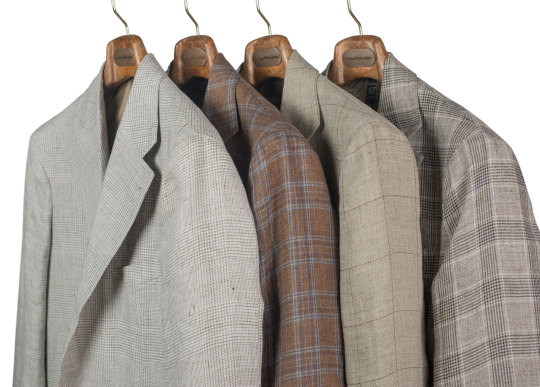
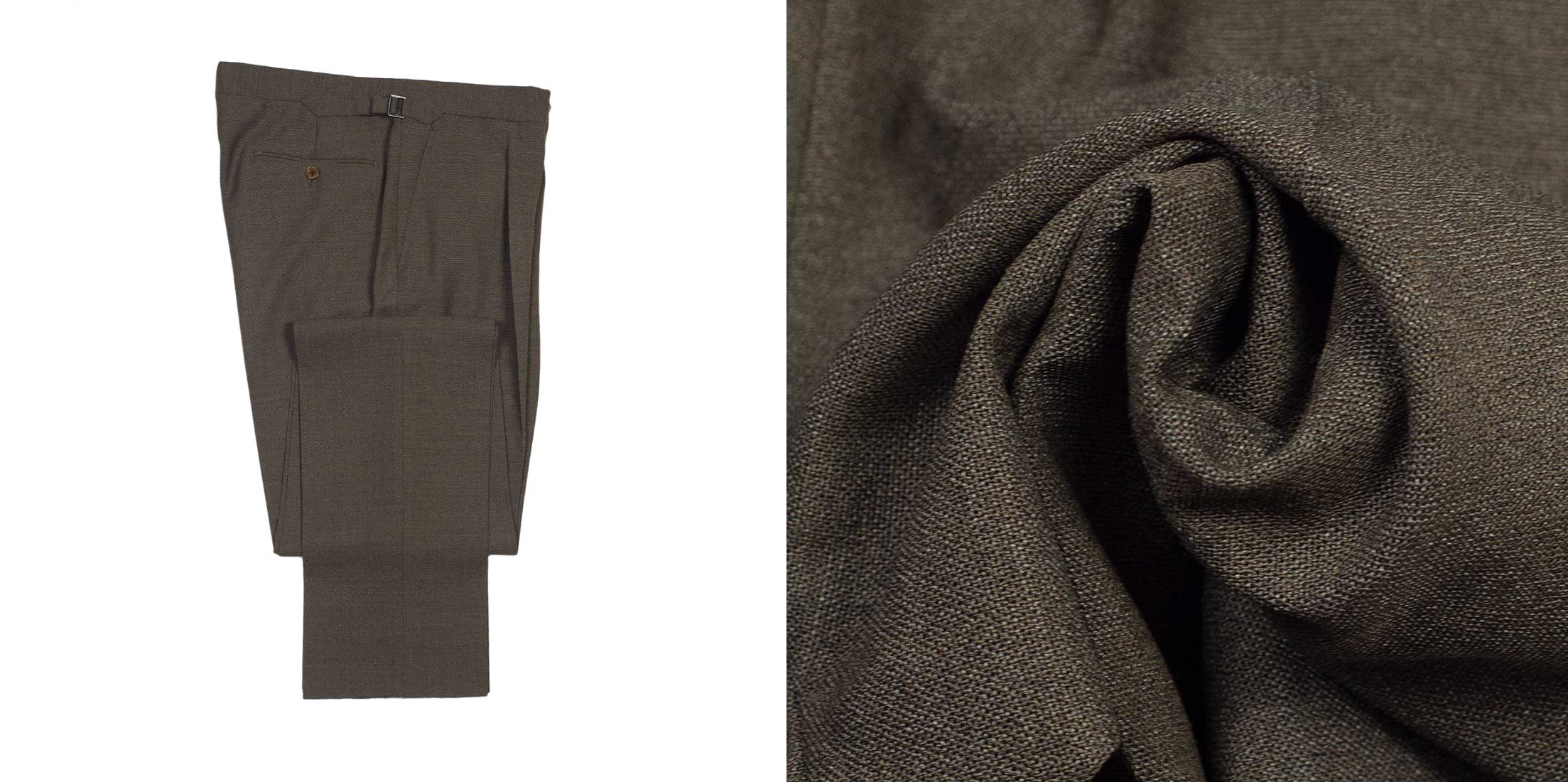
Same Color But Lighter or Darker
At some point, you may acquire a sport coat that falls outside of your usual range of navy blazers and brown tweeds. On StyleForum, some people use the term “Northern Lights” to reference when sport coats are lighter than the trousers — a reverse of the usual dark-colored jacket with a lighter trouser combination. Such jackets can sometimes be challenging to wear.
In these cases, the easiest solution is to identify the primary color in your sport coat and then go one or two shades darker or lighter for your pants. For many men, their first “nonstandard” sport coat is in tan or cream, such as the ones you see hanging on the rack in the photo above. If you have a jacket like this, No Man Walks Alone’s Draper’s four-ply is a wonderful solution. It’s a grey-ish shade of brown. The grey cast keeps this grounded and conservative, helping the trousers play more in the background of the outfit. At the same time, since these are dark brown, they naturally complement tan jackets.
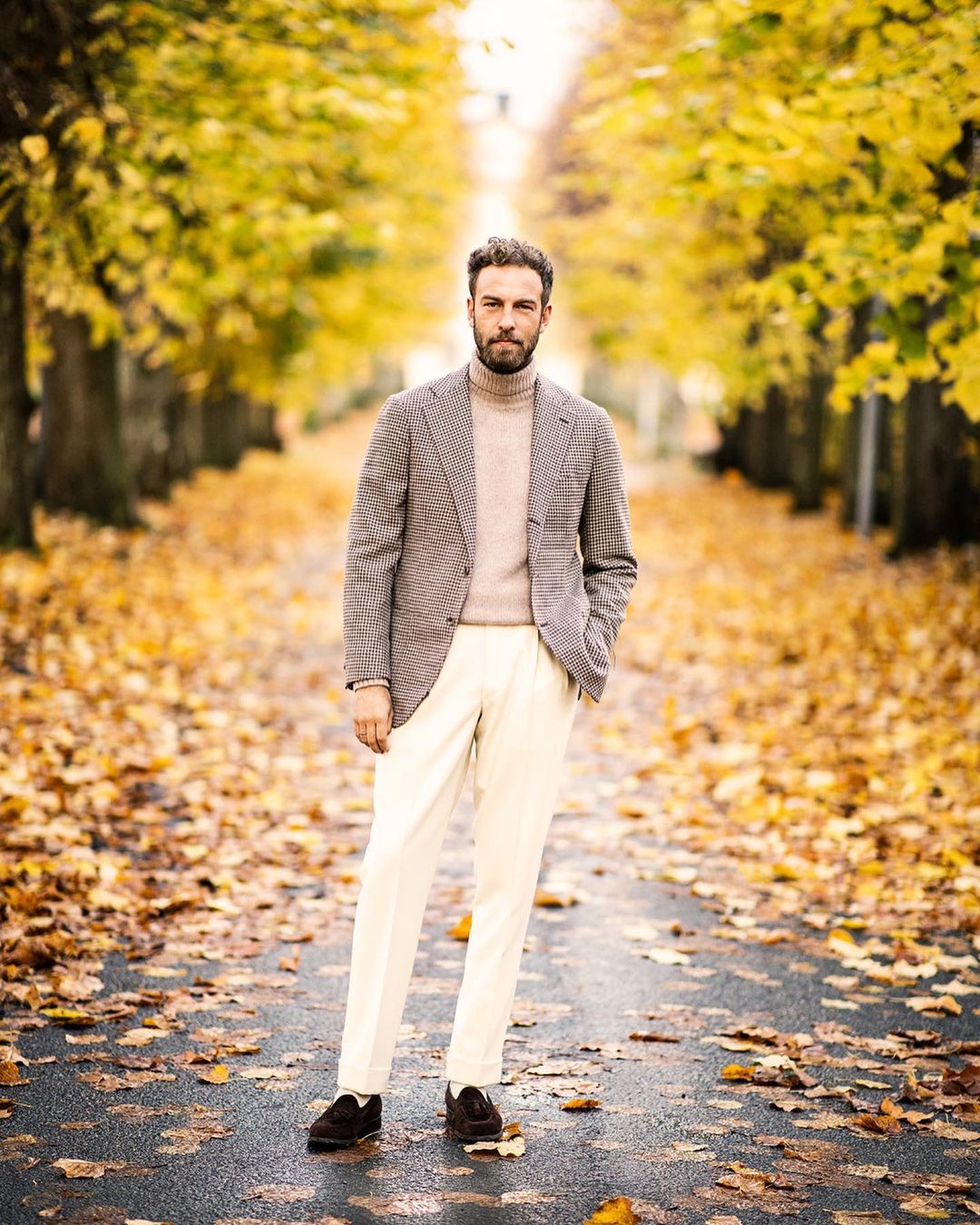
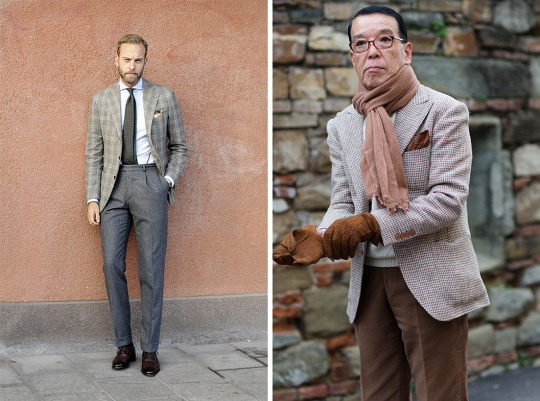
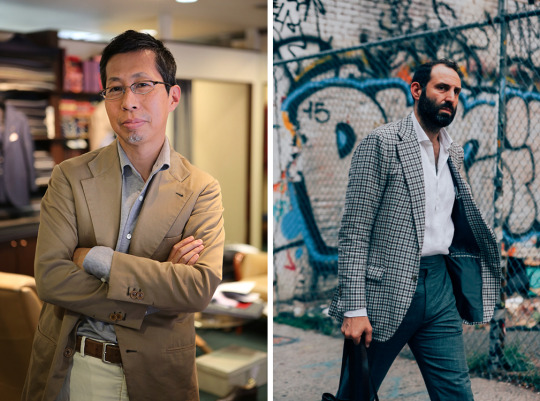
You can see this solution implemented in the various outfits above. With lighter grey checked sport coats, Greg Lellouche and Andreas Weinås wear darker grey pants. With similar cream/ brown houndstooth sport coats, Andreas Weinås and Yukio Akamine went with either cream flannels or dark brown moleskins. When the jacket and pants are in the same color family, you have harmony. When you vary the shades and materials, you get contrast. These are the only two dimensions you need to make a sport coat and trouser combination work.
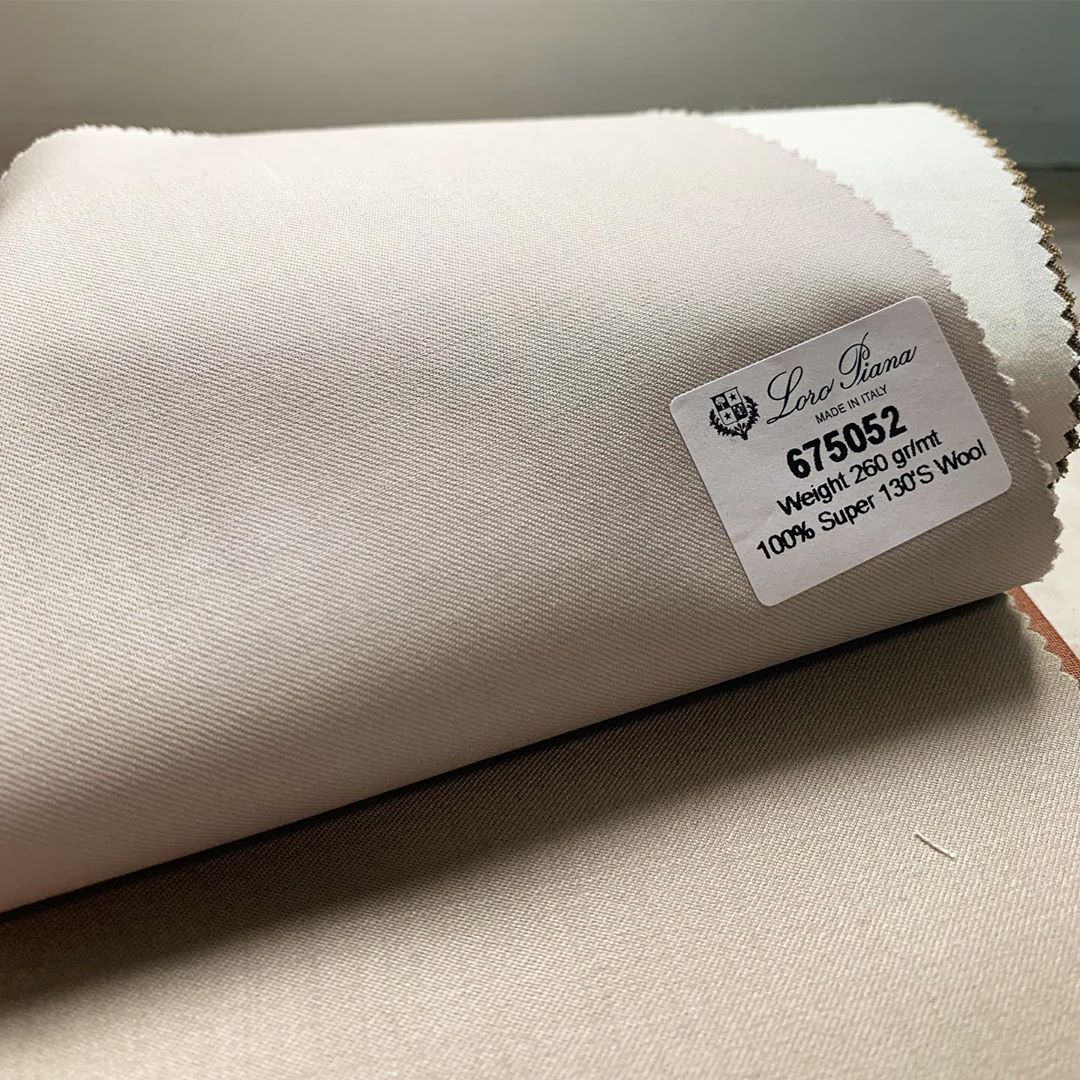
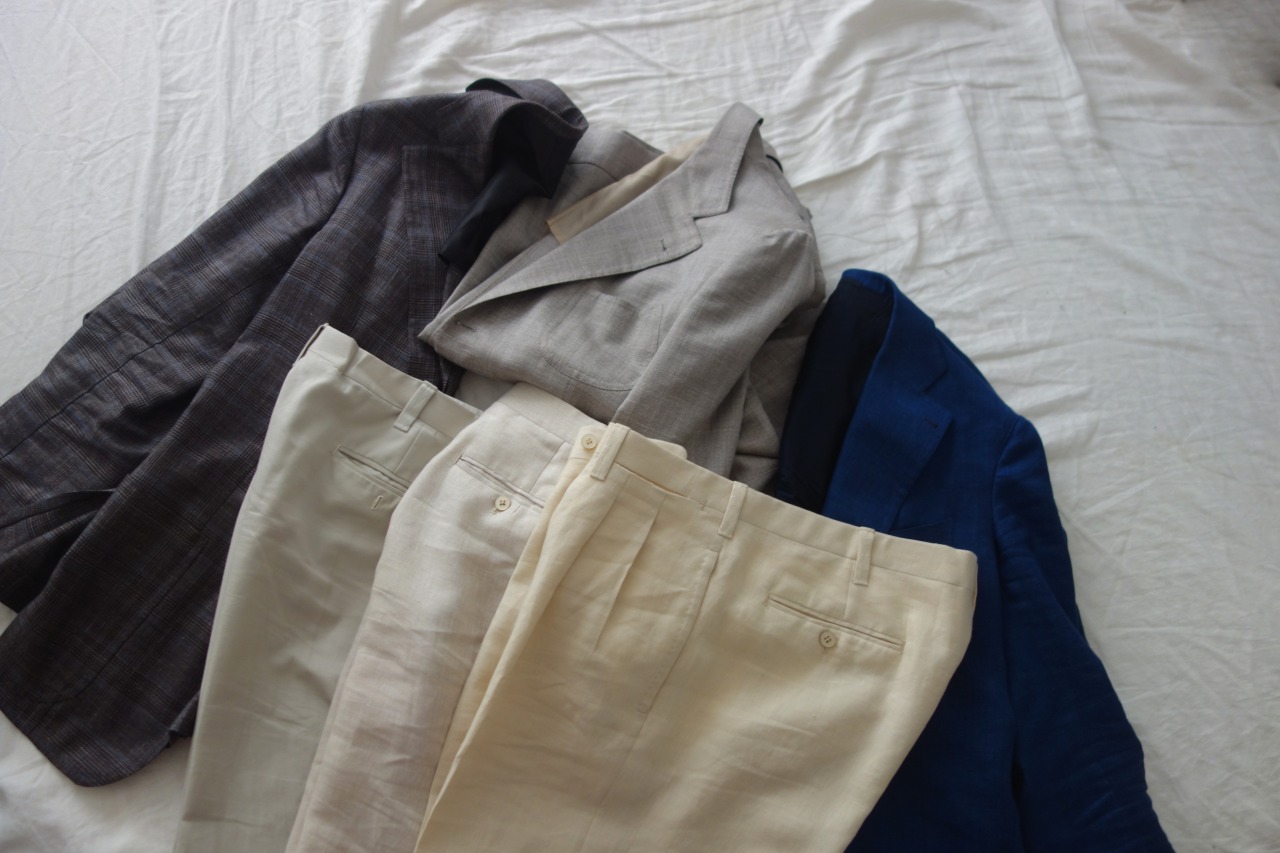
Pay Attention to Intensity and Temperature
The term “color temperature” is used to describe when a color feels warm or cold. Roughly, it refers to when a color moves from an open flame to an open sky. Think of what happens when you add yellow or red to a base color such as blue or brown. A warm brown will be something such as terracotta. A cold brown is taupe.
Nearly every color has a temperature, and getting the right sport coat + trouser pairing will require sensitivity to whether a color feels warm or cold. Take a look at the photo above: the cold brown jacket on the far left can only be worn with the stone or cream-colored trousers on the left and center. However, the intense, bright blue sport coat on the right has to be worn with the similarly intense, slightly warm, yellowish trousers on the right or the cream trousers in the center. If you were to swap the positions of the jackets, the outfits wouldn’t feel as coherent.
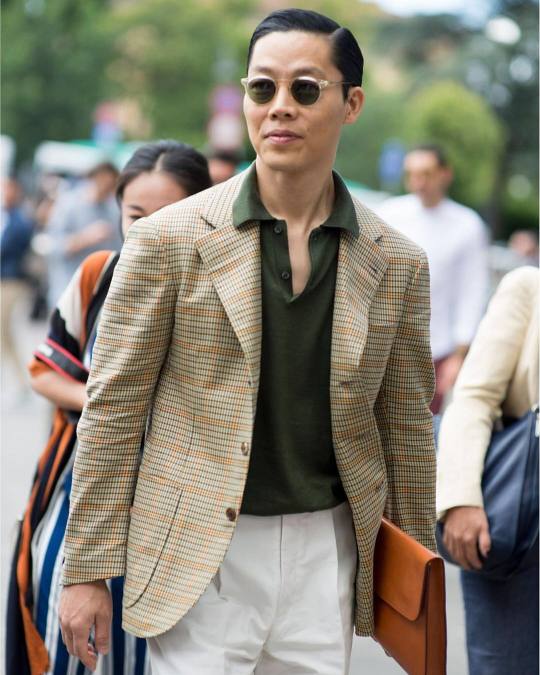
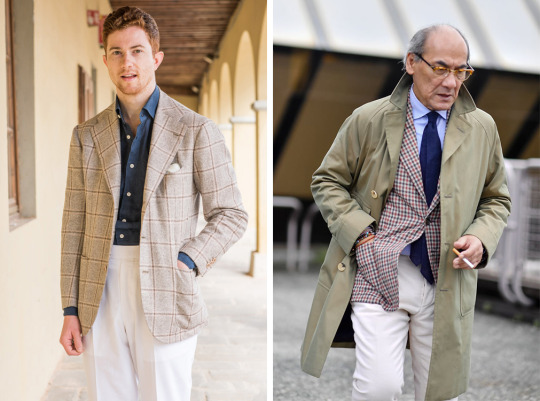
Try White or Cream
Finally, if nothing works, try off white, cream, or stone. These colors are fairly neutral and will work with a wide range of sport coats — from more traditional colors such as navy or dark brown to unusual colors such as tan or sage. Just beware that, sometimes, a pair of white pants can show the pocket bags underneath. If you’re ordering custom pants, consider the translucency, and go for a heavier fabric or slightly darker color when in doubt. Draper’s stone-colored, wool-cotton tricotine is a good starting place. All things equal, twills are generally more opaque than their plain weave counterparts, partly because they’re more tightly woven.
To be sure, these are not hard rules. Some men may find that they get a lot of use out of olive chinos (a popular choice, and for good reason). Preppy guys love their Nantucket Reds. Other guys may find that a warm, golden brown tweed looks tremendous with cold grey flannels. As ever, it’s always best to go by your eye. But you can simplify the process by following the ideas above:
- Stick to solid-colored trousers in grey or tan for most of your wardrobe.
- Vary things by weave and material. When choosing different fabrics, start with what makes the most sense for your climate.
- When in doubt, choose trousers that are the same color as your jacket, but go a few shades lighter or darker.
- Pay attention to color temperature and intensity.
- If all else fails, try off-white, stone, or cream-colored pants. Those colors are so neutral, they can hold almost anything.
The post How To Choose Trousers For Any Sport Coat appeared first on Put This On.

